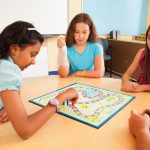Table of Contents
Career education across Canada: A curriculum snapshot
Career development and education are increasingly being woven into provincial and territorial curriculum across Canada, reflecting a national shift toward experiential learning, financial literacy and future readiness. Here’s a look at how career-related learning is taking shape from coast to coast.
Provincial and Territorial Overviews
Alberta
Career and Life Management (CALM)
CALM is a three-credit required course during the final years of high school. It is aimed at providing students with information to make well-informed choices in all aspects of their lives, which will help them plot their future career path.
Career and Technology Foundations (CTF)
CTF is an optional program for students from Grades 5 to 9 that examines career possibilities and occupational areas, allowing students to explore their passions, interests and skills.
Career and Technology Studies (CTS)
CTS is a program designed for high school students in Alberta to explore career options and develop relevant skills. This one-credit course can be used to explore various fields like business, health, media, and trade.
What’s new
- The 2023 Career Education Task Force Final Report was created to strengthen the connection between education and the job market. Aimed at students from grades 7-12 to provide practical, hands-on learning opportunities in preparation for post-secondary and workforce.
- Alberta is revising Grades 7-9 curriculum, with career education drafts expected by summer 2025, field testing in 2025-26 and full implementation by 2027-28.
British Columbia
The curriculum is grounded in the idea of pursuing a “journey” in personally meaningful and goal-oriented ways. This webpage outlines the curriculum for each grade from kindergarten to Grade 12. In Grades 10-12, the curriculum focuses on:
- Career-Life Education: emphasizing career-life choices, cultivating networks, finding work-life balance and fostering lifelong learning.
- Career-Life Connections: focusing on career-life development, decisions, reciprocal relationships, career-life balance and active citizenship. This guide provides an overview, delivery examples, and capstone criteria.
What’s new
- In 2023, BC launched Find Your Path, a personalized, digital tool designed to help students explore careers and education/training options specifically in British Columbia.
Manitoba
Career Development Education aims to ensure students understand the relevance of their education and its link to knowledge acquisition and skill development in the workplace. The high school curriculum includes a lot of optional courses available in full and half-credit courses. This flyer provides details on courses available from Grade 9 to 12: Credit for Employment, Career Development Internship and Community Service Student-Initiated Project.
New Brunswick
The principles of Universal Design for Learning are applied in the K-12 curriculum. The education strategy aims to engage students, educators, families and community organizations through inclusivity, innovation and collaboration. Educators can use Career Connected Learning Online Modules to incorporate learning competencies into their classroom practice.
Learn more about the New Brunswick model in these CareerWise articles by Tricia Berry, Learning Specialist with the New Brunswick Government: Career Connected Learning: Innovations in experiential learning from New Brunswick and Now is the time to innovate in career-connected learning
Newfoundland and Labrador
Newfoundland and Labrador’s career curriculum emphasizes lifelong learning through eight key learning outcomes. Organized into three strands: Personal Management, Career Exploration/Learning and Work, and Career Preparation: Life/Work Building. It offers specific modules tailored to Elementary, Intermediate, and High School levels.
Northwest Territories
Career and Technology Studies (CTS)
The Northwest Territories uses a revised version of the curriculum in Alberta. It organizes courses by levels (introductory, intermediate and advanced) and not grades, which creates multiple entry points. The CTS program has five clusters and more than 1,000 one-credit courses in 28 occupational areas, which are aligned with the National Occupational Classification.
Nova Scotia
The curriculum has full and half-credit courses that build on content from healthy living/life skills courses within Grades 7 to 9. The high school courses, which are a mix of optional and mandatory, include:
- Career development for Grade 10
- Co-operative education for Grades 10, 11 and 12
- Life/Work transitions for Grade 10
- Career development for Grade 11
Nunavut
Career and Technology Studies (CTS)
Like Alberta, competency-based CTS instructional units are available. CTS courses in Nunavut consist of a suite of Nunavut Cultural Courses (NCS) and Alberta CTS courses.
The overarching educational curriculum transcends subject-specific content areas, with core curriculum organized by strand and subject. One of these strands is Iqqaqqaukkaringniq, which encompasses Career and Technology Studies, Math and Science, from kindergarten to Grade 12.
Ontario
Students explore questions about their identity and goals as they progress through the education system. From kindergarten to Grade 6, students may create a portfolio of their work and personal reflections. From Grades 7 to 12, students can record their goals in an Individual Pathways Plan on web-based software.
Grade 10 Career Studies: A Guide for Parents
This half-credit course is compulsory for graduation. Career Studies is designed to help students gain the knowledge and practical skills they need to explore and learn about various career options.
What’s new
- Starting 2024-25, Ontario introduced a mandatory technological education credit for high school graduation by Grade 9 or 10.
- Starting 2025-2026 school year, financial literacy will be introduced as a graduation requirement through the Grade 10 Math curriculum (minimum 70% pass).
- Ontario is investing $14 million to improve career coaching and guidance resources for Grades 9 and 10 students in public schools.
Prince Edward Island
Career and Technical Education Curriculum
PEI’s Career and Technical Education Curriculum includes multiple streams: Automotive, Carpentry, Robotics, Technical Education and Welding.
Career Exploration and Opportunities
This curricular area is nested under Business Education in the Grades 10 to 12 curriculum. The Career Exploration & Opportunities course provides students with a platform to develop the skills they need to become self-directed individuals who make healthy decisions, set achievable goals and take responsibility for pursuing their goals throughout life.
Quebec
At the secondary level, Quebec includes career development as an area of learning. The education program focuses on Personal and Career Planning and Career Planning, and Entrepreneurship.
Saskatchewan
The curriculum is offered at the following levels, with each having specific outcomes and indicators:
Yukon
Yukon’s career curriculum is aligned with British Columbia’s curriculum program. It adaptation includes Yukon content and Yukon First Nations’ ways of knowing and doing. Students in Grades 10 to 12 must meet BC’s credit and course requirements to graduate. Career-Life Education and Career-Life Connections are among the required credits.
Additional resources
- Career Development Resources (Manitoba)
- ChatterHigh Career Exploration Platform
- Exploring Possibilities! Journeying Through Career-Related Learning in Grades 4–6: A Teaching Toolkit (CERIC)
- Labour Market Information Council (LMIC)
- What Career-Focused Curriculum Looks Like (Harvard Business Publishing)







